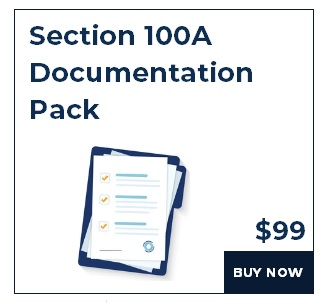
Lisa’s Lore
A Supreme Court case in Queensland has caught our attention this week: Re Permewan [2021] QSC 151. It’s got everything you could want in a case about a deceased estate: family drama, intrigue and a valuable lesson about the “gift and loan back” strategy.
The “gift and loan back” strategy is popular for individuals with high:
- occupational risks;
- bankruptcy risks; and/or
- family provision claim risks,
who also own assets in their personal capacity that would be vulnerable to those risks. The strategy aims to strip the value out of the personal asset pool, without transferring any assets themselves (which would otherwise trigger capital gains tax and duty). Transferring the value is achieved by a two-step process:
- the high-risk owner of the asset gifts an amount equal to their equity in that asset to a low-risk entity; and
- the recipient of that gift then lends the same amount of money back to the owner and takes a registered security interest over the asset.
With that as our backdrop, the Re Permewan story goes like this:
- Mum died in September 2019, leaving three adult children: Scott, Marla and Donna.
- The three children were not on particularly friendly terms with each other.
- At first glance, the estate had about $3 million worth of assets, including mum’s home and share portfolio.
- The Will named Scott as the sole executor and gave the whole estate to mum’s family trust (of which Scott was also given control).
At this stage, you can already sense the family provision claim vibes coming from the two daughters, who had no entitlement to benefit from the family trust unless Scott exercised his discretion in their favour.
However, if we rewind to April 2018, mum entered into a series of transactions in the lead up to her death:
- By a promissory note, mum gifted $3 million (i.e. the equivalent of her net worth) to her family trust.
- The family trust then entered a loan agreement with mum, under which mum “borrowed” $3 million – although no funds changed hands.
- The family trust registered security over mum’s home and share portfolio.
This effectively stripped all value out of mum’s estate, putting Marla and Donna in a position where it would be futile to make a family provision claim on an apparently worthless estate.
The inquiry as to whether the pre-death transactions were in fact binding on the estate ordinarily ought to have been made by the executor. However, Scott was not inclined to scrutinise something that was ultimately to his advantage.
Donna applied to the Court for the next logical step: to remove Scott as the executor. The Court found that the proper administration of the estate would be frustrated by Scott continuing as executor and replaced him with an independent lawyer.
In doing so, the Court observed that the pre-death transactions were a blatant attempt to obstruct any family provision claims on the estate. It will be interesting to see how the new administrator of the estate handles those transactions in the substantive proceedings.
Regardless of whether the “gift and loan back” strategy is completely effective, it puts another barrier in front of creditors/claimants that will make it harder for them to pursue their claim. In turn, this means that they will be less likely to take action.
A lesson from Re Permewan is that the exchange of promissory notes as part of a “gift and loan back” strategy, where there are no liquid funds readily available to meet the obligation under those notes, might be questioned far more readily than where cash physically changes hands. Legal lessons aside, reading 81 profanities in this 18-page judgement is well worth the entertainment value.
ATO Update
ATO Guidance: Extension of time for MYR on Division 7A loans
The ATO has announced that an extension of the repayment period is now available for those who are unable to make their MYRs on Division 7A loans by the end of the lender’s 2020-21 income year (generally 30 June) due to the ongoing effects of COVID-19.
Draft Taxation Ruling TR 2021/D4 – Royalties: Character of receipts in respect of software
The ATO has released a Draft Ruling which sets out when receipts from the licensing and distribution of software will be royalties as defined in subsection 6(1) of the Income Tax Assessment Act 1936 (Cth). The Draft Ruling sets out that an amount is a royalty as defined in subsection 6(1) to the extent that it is paid or credited as:
- consideration for the grant of a right to do something in relation to software that is the exclusive right of the owner of the copyright in the software;
- consideration for the supply of know-how in relation to software; or
- consideration for the supply of assistance furnished as a means of enabling the application or enjoyment of the supply.
When the final Ruling is issued, it is proposed to apply before and after its date of issue. The Ruling replaces Taxation Ruling 93/12 Income tax: computer software, which has been withdrawn from 1 July 2021.
Draft Taxation Ruling TR 2021/D3 – Research and development tax offsets: At risk rule
The ATO has released a Draft Ruling which considers the tests for determining whether your expenditure is ‘at risk’ under section 355-405 of the Income Tax Assessment Act 1997 (Cth) (the ‘at risk’ rule). The ‘at risk’ rule prevents a research and development entity from deducting expenditure that is not ‘at risk’.
State Taxes
Budget 2021-22 (NSW): Tax measures
As part of the 2021-22 New South Wales Budget, it was announced that from September this year, stamp duty will be waived for eligible electric vehicles under $78,000.
Budget 2021-22 (SA): Tax measures
The 2021-22 South Australian Budget delivered a number of tax measures, including the following:
- the payroll tax exemption for new apprentices and trainees will be extended for another year until 30 June 2022;
- the rate of land tax relief for taxpayers impacted by the aggregation of land changes will be increased from 30% to 70%; and
- eligible build-to-rent housing projects can access the 50% discount on land value for land tax until 2039-40.
Cases
Munkayilar v FCT [2020] AATA 1839 – Shortfall penalties reduced
The AAT has exercised its discretion to remit the majority of a taxpayer’s shortfall administrative penalties.
In his 2018 return, the taxpayer claimed work-related expenses of $15,492 which included $9,435 in self-education expenses for a course paid for by the government and a further $4,000 for HELP repayments. The taxpayer’s tax agent (who prepared the 2018 return) had told the taxpayer that the course fees would be added to his previous student HECS debt and that he would eventually have to pay it off. Further, the taxpayer said that he was not aware that he had claimed $4,000 for a HELP debt in his 2018 tax return. In 2019, the ATO issued an amended assessment to the taxpayer which disallowed the work-related expenses in full as well as issuing shortfall penalties of $6,065.95 for making a false or misleading statement.
The AAT affirmed the amended assessments that were issued by the Commissioner and confirmed that the taxpayer was liable to pay the shortfall administrative penalties. However, the AAT decided to exercise its discretion under section 298-20 of the TAA to reduce the shortfall administrative penalties by 85%. In exercising this discretion, the AAT stated that the taxpayer had not intentionally provided false information and that the deductions claimed in his 2018 returns resulted from his tax agent’s advice. Further, the AAT pointed to the fact that the taxpayer did not have a poor compliance history.
SYRF v FCT [2021] AATA 1845 – Taxpayer denied relief from tax debt
The AAT has affirmed a decision of the Commissioner to not release a taxpayer from her tax debt on grounds of serious hardship.
The taxpayer had suffered an injury at work and received WorkCover compensation payments as a result of her injury. Later on, the taxpayer received a superannuation disability pension because she was unable to work, as well as a lump sum permanent disability benefit from her superannuation fund spanning the 2011-2012 and 2012-2013 years. The receipt of the lump sum payment resulted in a discrepancy in the applicant’s tax contribution, because the applicant now had two income streams which required the second income stream to be taxed at a higher rate. The discrepancy resulted in a tax debt, which was $17,870 as at 18 December 2019 (including penalties and GIC).
The issue before the AAT was whether the taxpayer should be released from her debt on grounds of serious hardship. The AAT accepted that based on the circumstances the repayment of the debt would cause the taxpayer serious and ongoing hardship. However, on the basis that the taxpayer had engaged in multiple examples of discretionary expenditure that was not reasonable having regard to her tax debt, the AAT refused to exercise the discretion to relieve the taxpayer of her tax debt. The ‘discretionary expenditure’ incurred by the taxpayer included:
- purchasing a new car for $37,500;
- transferring $15,000 to a foreign bank account; and
- purchasing flights to Europe for her and her family.
Legislation
Treasury Laws Amendment (2021 Measures No. 4) Bill 2021 – Bill passed by both houses
The Bill which:
- amends the Fringe Benefits Tax Assessment Act 1986 (Cth) to include an FBT exemption for employers who provide training to redundant or soon-to-be redundant employees to allow them to gain new employment;
- extends the juniors minerals exploration incentive for another four years; and
- exempts certain granny flat arrangements from capital gains tax,
has been passed by both houses of Parliament and has received assent (covered in the Birchstone Brief for the week ended 28 May 2021).
Fuel Tax (Road User Charge—Gaseous Fuels) Determination 2021 – Road user charge increased
A Determination has been made to increase the road user charge for taxable fuels for which duty is payable to a rate of $0.353 per kilogram (representing a 2.5% increase).
Treasury Laws Amendment (2021 Measures No. 3) Bill 2021 – Bill passed by both houses
The Bill which:
- increases the Medicare levy low-income thresholds;
- changes the tax treatment of lump sum payments made to Thalidomide survivors; and
- grants new entities deductible gift recipient status,
has been passed by both houses of Parliament and received assent (covered in the Birchstone Brief for the week ended 14 May).
Superannuation Legislation Amendment (Superannuation Drawdown) Regulations 2021 – Superannuation minimum drawdown rates
Regulations have been made which extend the temporary reduction in superannuation minimum drawdown rates until the 2021-22 income year (covered in the Birchstone Brief for the week ended 4 June).
Treasury Laws Amendment (2021 Measures No. 5) Bill 2021 – Screen Production Incentive and miscellaneous changes
The Bill which makes changes to the Australian Screen Production Incentive as well as other miscellaneous amendments has been introduced into Parliament.

